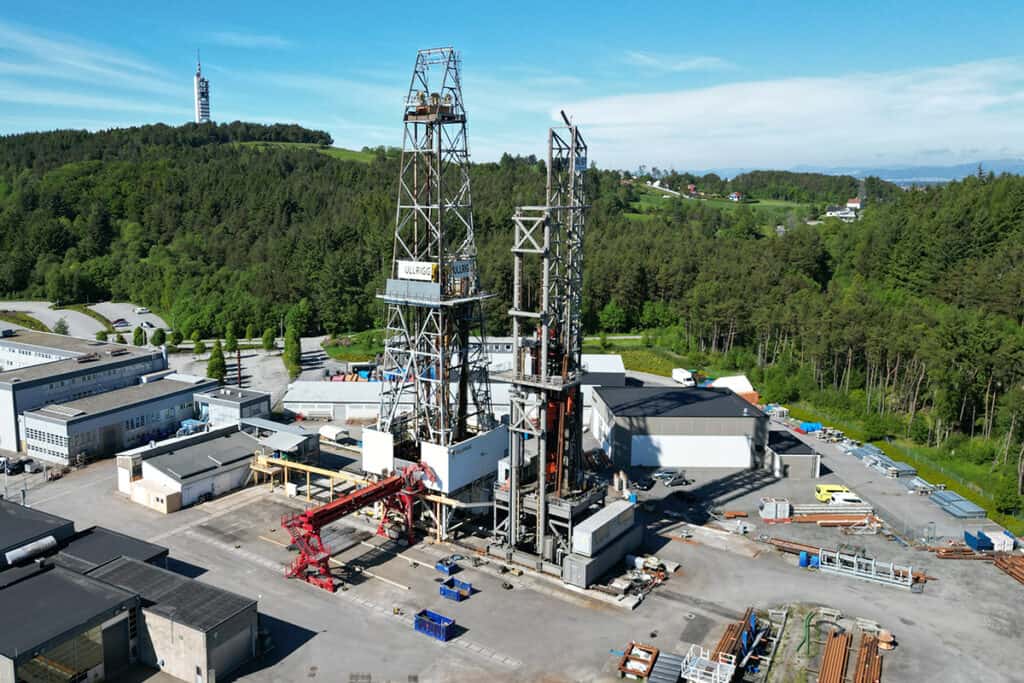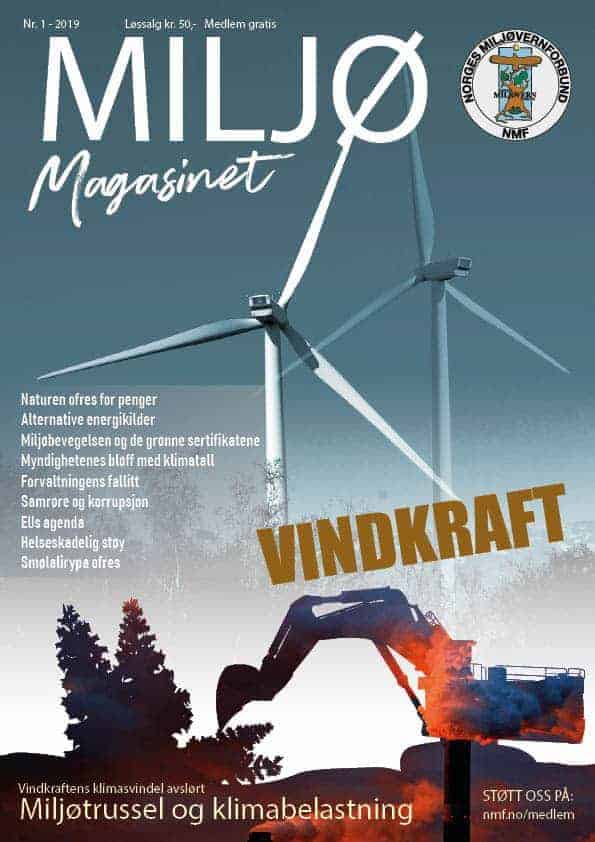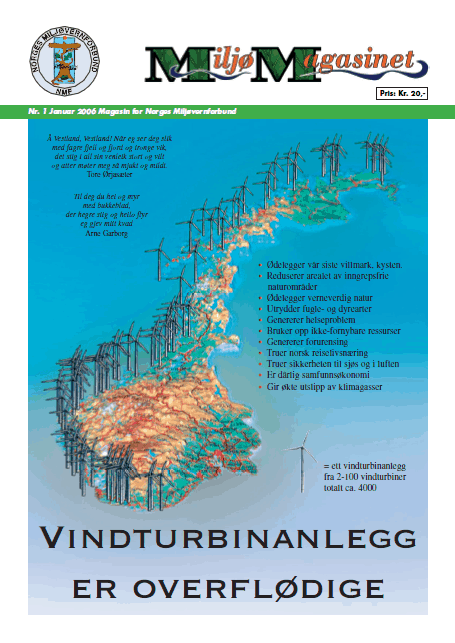Introduction – Norwegian energy policy, down for the count?
The Norwegian energy supply is in crisis. Not because we have any real energy deficit, but because we ourselves have driven energy policy off the cliff. Is this random? Hardly. This looks like a managed policy against a contrived crisis. In southern Norway, we are seeing power prices we have never seen before. We are drained of our precious power reserves in huge quantities through the increasingly numerous foreign cables. And what does the government do? Some small measures which are almost certainly rigged to later end up with the opposite effect. The aim has always been to make the population receptive and not least to demand more development of nature- and environmentally damaging wind power and offshore wind.
After the great mayor's revolt, where a number of the country's mayors signed a petition against wind power, the government responded by creating new tax rules to bribe reluctant municipalities to accept even more of what they don't want. They added the hearing on the new tax rules in good time in the middle of the joint holiday last year, in the summer of 2021. If they don't want to, they have to. Placing such an important consultation as this in the middle of a public holiday where only a few people have an opportunity to review the consultation documents and make input is a shame. We often find such manipulative exercise of authority in countries with which we do not wish to compare ourselves. We certainly shouldn't have that here in Norway.
The government also set up an energy commission which was to collect information about the energy supply and make recommendations for the future. As early as 11 May 2022, the day after a number of organizations and other actors lined up for an oral input round, and two weeks before the deadline for written input, the bombshell came. The government launched the offshore wind investment of the times. They didn't have time to wait for their own energy commission or until they had heard what the people had to think about the matter.
You thus disregard your own energy commission and makes one of the biggest energy policy decisions in historical perspective without hearing from either companies, organizations or private individuals. This is in direct conflict with the Aarhus Convention's objectives regarding access to environmental information and participation in decision-making processes.
Europe's and Germany's Energiwende failed long before the conflict in Ukraine. Much of the blame for this was the gigantic investment in unstable and unreliable energy from wind power. And it is precisely this instability that is wind power's Achilles' heel, in addition to the fact that it destroys huge natural areas and has a number of other environmental and pollution problems with, among other things, microplastics and oil leaks etc. materials, and not least is largely produced with fossil and coal power.
Green energy and zero emissions from wind power are nothing more than a giant hoax. It is not green and there are also very large carbon emissions associated with wind power in a life-cycle account, from mining and exploitation of metals and other materials to the turbines once being removed and hopefully recycled. As of today, there is no solution to recycle the enormous turbine blades and it is estimated that by 2050 there will be as many as 40 million tonnes of such waste.
When it comes to the instability that wind power brings into the electricity supply so even NVE warns against major future imbalances in the grid if more wind power/offshore wind is developed[1]. There will soon not be enough adjustable power reserves to handle the imbalances caused by the unstable wind power. We simply do not have the opportunity to develop more unstable and environmentally harmful wind power, either on land or at sea.
Now the nation is screaming for solutions, and we have already had the solutions for a long time. It is right there in the day, or rather, right under our feet in the ground.
The energy source of the future is geothermal
The potential of the energy source that lies down in the ground is almost infinite. Remember that approx. 50% of all energy needs in buildings, private and business goes to heating. With heat pump technology, we can retrieve this heat already from the top layers of the soil. For example, shallow geothermal heating is used at Gardermoen, where two wells of 1,500 meters keep the ice pits ice-free.
Deep geothermal energy production
Further down, the rocks are constantly supplied with heat from the earth's core. Not only do we have the world's leading competence and professional environment within drilling technology, but our offshore companies are completely in the lead. While here on the rock we have been drilling for oil and gas, developments in geothermal energy have undergone rapid development elsewhere in the world. Among other things, the problem of porous and hard rocks has been solved by drilling with different variants of plasma technology[2], and using heat pump technology[3] and media other than water, the threshold for how low temperatures can be used for energy production has been lowered. By using supercritical CO2 e.g. in a binary system, electrical power can be produced from temperatures as low as 31oC. Siemens, for example, has developed such turbines[4] and markets these as a solution that can produce electrical power from waste heat from, among other things, smelters. One now realizes that the potential to supply the country with significant amounts of energy is certainly present.
Only in the North Sea do we have in wells from 3500 – 5500 meters temperatures between 150 – 190 oC. Even if we have to drill somewhat deeper on land to get the same temperatures, it is easy to see the potential when we only need a little more than 31oC to produce electrical power.
If geothermal is so good, why haven't we started using it already?
This is a very good question, and there are several factors that come into play here. What is very clear is that there is deep reluctance from both the industry and from the political side. One of the decisive reasons may be the large investment in environmentally harmful and unstable offshore wind. There are hardly any limits to the amount of subsidies thrown at the offshore wind industry. In 2019, the government allocated 3 billion to what they call "cleaner seas". A total of 2.3 billion of this went straight to subsidizing the wind power development of Hywind Tampen[5]. It is difficult to get exact figures on how much Equinor and Aker have collectively received in subsidies for this project, but as early as June 2021, NRK estimated the combined subsidies (Enova and NOX fund) and tax deductions at 4.5 billion. Is it really any wonder that the offshore industry wants to keep full focus on offshore wind and keep all other solutions down when the subsidies for this horrible technology just pour in from Norway and various other support schemes in the EU? It does not pay for them to remove the focus from the source of the money itself, where huge amounts of free money are sprinkled out from the common fund. If the people get wind that there are much better solutions available, will they stop this flow of money? You then do not give up the golden calf that gives the offshore wind players an endless stream of free money straight into their pockets.
In addition, the offshore wind projects are also very favorable as objects for making quick money. What we have seen from onshore wind power is that as long as they get a project ready with approvals, it is often resold at a good profit. Tax Justice Network Norway has documented that approx. 70% of all wind power projects are owned or financed through tax havens[6]. There is hardly any reason to believe that it will be much different for offshore wind as well.
Safety and social benefit
As previously mentioned earlier, all wind power is unstable and unpredictable som energiforsyning. Den kan heller ikke eksistere i en energiforsyning uten en tilstrekkelig mengde balansekraft. I tillegg bygges de fleste vindkraftanlegg langt fra der strømmen skal forbrukes, og enda verre blir dette for havvind. I en allerede stresset energiforsyning er det lett å forestille seg konsekvensene av en mast ved Sognefjorden, eller en russisk fiskebåt med dregg. Skal vi bygge fremtidens energiforsyning så må den være stabil, robust, og ikke minst lite sårbar. Det er akkurat dette som er en av de sterke sidene ved geotermisk energiproduksjon. Produksjonen har et veldig lavt arealbeslag på overflaten og kan utnytte varmen fra brønner som strekker seg milevis i radius fra anlegget dypt under bakken. Og ikke minst, energiproduksjonen kan plasseres svært nær der den skal brukes. I Nordsjøen kan et slikt anlegg plasseres på eller i nær tilknytning til eksisterende installasjoner, og på land ser en gjerne for seg at en benytter et industriområde og gjerne i nærheten til byer eller befolkningssentra. Nært i avstand gir lav sårbarhet, og stabil energiforsyning gir stabilitet og forutsigbarhet.
What does such a solution look like?

Look, for example, at Ullrigg near Stavanger. This is a drilling rig for teaching and research. Note that the entire rig is movable on rails. We do not need new research to start a geothermal energy plant. The technology is already available, and we have the competence environments and technology needed to initiate such a project. In addition, we also have a very thriving environment of offshore companies that have both the capacity and resources to get started. What is so ingenious about such a solution is that the production plant with turbines and pipe streets can be built at the same time as the first well is drilled and put into operation immediately when it is ready. We can already do this with today's technology, while the next wells can be drilled and designed with newer technology and solutions as new solutions are developed. It is not difficult to imagine that the world's leading oil nation and with a world-leading professional environment in offshore drilling should not be able to come up with much better solutions than what is already available abroad. Remember that by using solutions such as supercritical CO2 (in a binary system) do not need much higher temperatures than 31oC to produce electrical energy. And with deep holes and higher temperatures, much larger amounts of energy are obtained from the same amount of water from the ground. The genius of such a facility is that it can be scaled up over time as new wells are drilled and connected.
We are already drilling several wells in the North Sea which goes 4,000 – 5,000 meters deep and preferably 1,000 – 2,000 meters horizontally. The technology has actually become so advanced that they can drill large loops from two sides and meet in the middle. This can create closed loops that do not cause pollution to the external environment and that pump down and reuse the water after it has been used for energy production. In this way, you can build a network of loops that can act as a giant radiator far below the ground. We can do the same at sea for electrification of the shelf. Abundant access to stable energy as opposed to unstable offshore wind or electrification via onshore power which drains our power supply to well beyond the pain point.
When can we start?
The Norwegian Environmental Protection Association (NMF) has worked for a long time to get geothermal on the field. We have written a lot about it previously online and also in Miljømagasinet no.1-2019[7], and took this up with politicians and civil servants.
On 20 January 2022, NMF sent a letter to OED where we demanded that at least 5 billion be set aside to implement a full-scale deep geothermal plant in 4 different locations in the country where drilling is carried out 5,000 meters or deeper. On 24/01/2022, NMF repeated this demand to the Energy and Environment Committee at the Storting. And on 25 May 2022, this was also repeated in NMF's input to the Energy Committee.
The first plant can be designed and built fairly immediately. The technology is already available for the first phase and we have a technology environment with both world-class resources and expertise. There is no reason to wait. The environmentally friendly and stable energy supply of the future is called geothermal, and it will ensure society a stable and predictable energy supply far into the future. The money is much better spent on geothermal than any other unstable and uncertain energy system.
And not least, why should we develop even more unstable wind power here in Norway to export to Europe when the German authorities pay Danish wind power plants several hundreds of millions annually so that they will stand still and not produce when it is windy? [8] [9] [10] [11]
The energy supply of the future is called geothermal. Now is the time to put the shovel in the ground and start the new Norwegian energy adventure. The knowledge and technology we acquire along the way can also be the start of an export industry that can give Norwegian companies an advantage for technology export and establishment also outside the country's borders.
- The Norwegian Environmental Protection Association's input to the Energy Commission 2022 (PDF)
- NMF's letter to OED with demands for deep geothermal 20.01.2022 (PDF)
- NMF's letter to the Storting's energy committee with demands for deep geothermal 24.01.2022 (PDF)
- nmf.no – The energy supply of the future is called geothermal
- Miljømagasinet No.1 – 2019 Wind power (and geothermal)
[1] https://publikasjoner.nve.no/rapport/2022/rapport2022_20.pdf
[2] https://www.youtube.com/watch?v=g8sjdOjNxIE
[3] https://www.pv-magazine.com/2022/07/04/german-consortium-plans-to-build-worlds-largest-heat-pump/
[4] https://www.siemens-energy.com/global/en/news/magazine/2020/waste-heat-to-power-with-sco2-turbines.html
[5] https://www.regjeringen.no/no/dokumentarkiv/regjeringen-solberg/aktuelt-regjeringen-solberg/ud/pressemeldinger/2019/renere_hav/id2674883/
[6] https://www.taxjustice.no/artikkel/skatteparadis-i-norsk-vindkraft
[7] http://984072-www.web.tornado-node.net/wp-content/uploads/2019/10/Miljomagasinet-2019-1-Vindkraft-web.pdf
[8] https://www.dr.dk/nyheder/landmand-loefter-sloeret-mystisk-faenomen-derfor-staar-vores-vindmoeller-bomstille-naar-det
[9] https://www.tv2nord.dk/region-nordjylland/har-du-ogsaa-undret-dig-derfor-kan-vindmoeller-staa-stille-selvom-det-blaeser
[10] https://tv-kalundborg.dk/nyheder/vindmoller-star-stille-nar-det-blaeser-det-er-helt-gak-i-laget/
[11] https://www.tvmidtvest.dk/midt-og-vestjylland/naar-tyskerne-betaler-mere-end-tre-gange-saa-meget-vindmoellestroem-gik-til-spilde-i-2020
We said this in 2019

We said this in 2006






